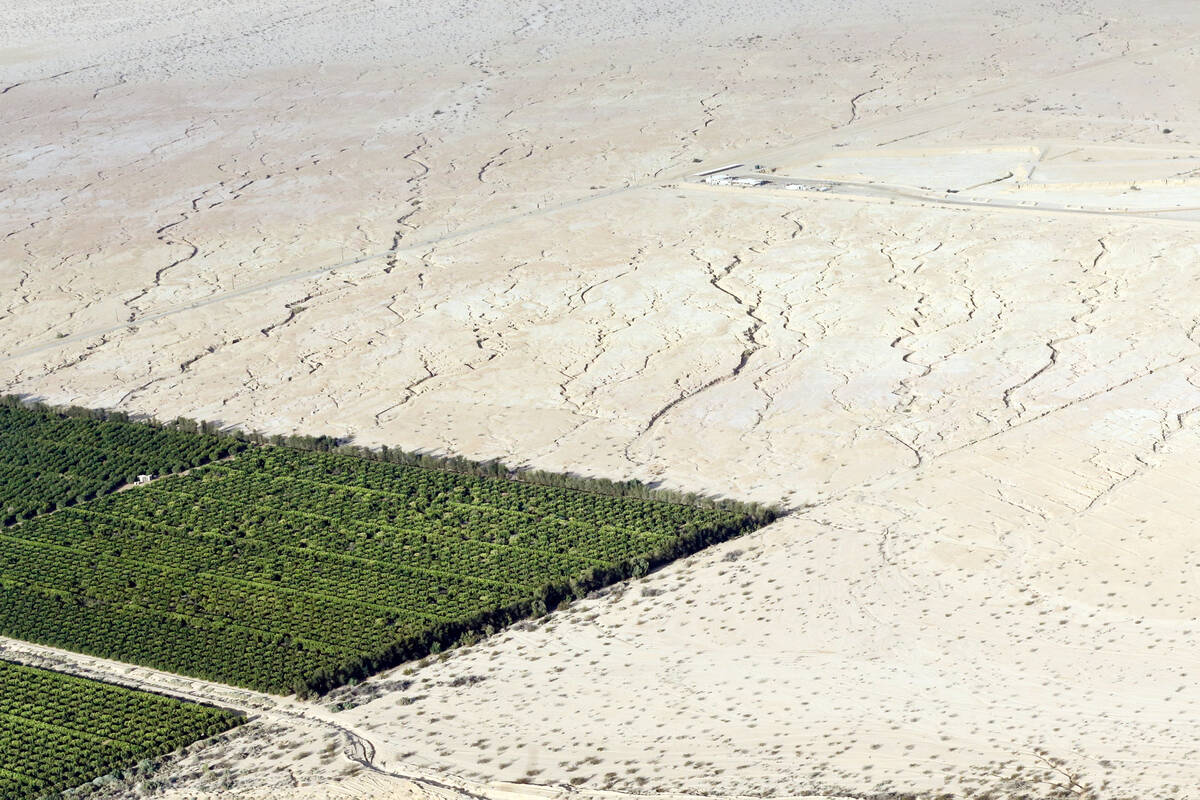Study reveals cheapest way to save Lake Mead

In an era when the federal government is tightening its purse strings and Lake Mead is still declining, a new study is highlighting where federal dollars go the furthest in saving water in the waning Colorado River system.
The study, released last month in the Journal of the American Water Resources Association, analyzed 462 projects from 2004 to 2024 in which the federal government invested a total of $1.08 billion in conservation.
“We want the dollars to deliver us the maximum water savings,” said Mehdi Nemati, a study author and assistant professor of environmental economics and policy at the University of California, Riverside. “This should be a little bit of a guide as to where we can save water with the lowest amount of money.”
Since Republican President Donald Trump took office in January, his administration has prioritized the controversial cost cutting of certain programs through its Department of Government Efficiency, or DOGE.
Trump and his officials have largely clawed back the Inflation Reduction Act — the largest investment in climate change mitigation in the nation’s history — calling it and similar congressional efforts the “Green New Scam.” That law has funded a large majority of water conservation projects in recent memory.
Nevada is one of seven states that depend on the Colorado River for its water supply — states that are negotiating behind closed doors to update river operating guidelines set to expire in 2026. The Las Vegas metro area sources about 90 percent of its water from Lake Mead, the nation’s largest reservoir, which is projected to plummet below historic lows in 2027.
To stabilize the system that’s closer to failing than ever, leading academics and nongovernmental organizations have urged swift and immediate cuts in water use in separate reports.
Cheap savings in ag?
The recent study puts a focus on reducing water demands, particularly in agriculture — with the cost of saving an acre-foot of water in the farming sector as low as $69.89.
That’s in sharp contrast to conservation projects focused on creating new supply like new reservoirs or wastewater reuse facilities, which can cost more than $2,000 per acre-foot on average, according to the study.
Water in the American West is often measured in acre-feet rather than gallons; one acre-foot of water is enough to cover an acre of land that is 1 foot deep, or about the acreage of a football field. An acre-foot is roughly the amount of water used by two single-family households in a full year.
What analyses like this one don’t wholly consider are the negative effects that water cuts in agriculture can have to the nation’s economy and livelihoods of generational farms, said Tina Shields, water department manager at the Imperial Irrigation District, in a Tuesday interview.
“It’s dangerous to consider ag as your long-term ‘reservoir,’ because we like to eat, and we want those folks to keep producing food,” Shields said. “As much as people like having water, they also like to eat.”
Shields’ district delivers water to California farmers near the Mexico border who have some of the most senior, or oldest, water rights in the Colorado River Basin. That means they would be the last in line for forced reductions over newer users who are considered more junior.
Farmers in this region produce the majority of the country’s winter fruits and vegetables.
Agriculture accounts for more than half of the water used each year from the river, according to a 2024 study, with cities only representing about 18 percent of the total use. A 2023 ProPublica analysis found that one farming family in the Imperial Valley used more water in one year than all of Southern Nevada.
Between 2023 and the end of 2026, the irrigation district expects to have saved more than 800,000 acre-feet of water through federal dollars that fund voluntary water conservation with farmers, agency spokesman Robert Schettler said.
One farmer’s perspective
A more-than-willing participant in these voluntary reductions is Andrew Lemigruber, a fourth-generation Imperial Valley farmer with an operation near Holtville.
The alfalfa grower’s great-grandfather immigrated to the Imperial Valley and established water rights before the Colorado River Compact of 1922. When the compact was signed and the U.S. divvied up river water between states, Clark County was home to fewer than 4,900 people, according to a timeline on the county’s website.
One federal investment that generated headlines last year was an Imperial Irrigation District program in which farmers fallowed crops, or left them unwatered, during the hottest points of the summer.
Lemigruber sees the agriculture sector adapting to drought as both a dire necessity and an opportunity, he said.
Advanced linear irrigation systems, for instance, have saved about 1.5 acre-feet of water per acre of farmland each year — all while simultaneously increasing the yield of those crops.
“Us farmers, we’re businessmen,” Lemigruber said in a Thursday interview. “We have to be sustainable, otherwise we can’t pay our employees wages or keep our families fed.”
Lemigruber acknowledged that fallowing, or letting crops dry out, isn’t a long-term solution worth considering, as it leads to gaps in employment and can leave farms in a tough spot. He said he’s far more interested in technological innovation.
While agriculture — specifically, alfalfa — is often painted as the bad guy in times of extreme drought, Lemigruber said the countrywide value of farming in the desert cannot be overstated.
“We can’t solve a water crisis by creating a food crisis,” Lemigruber said.
Contact Alan Halaly at ahalaly@reviewjournal.com. Follow @AlanHalaly on X.